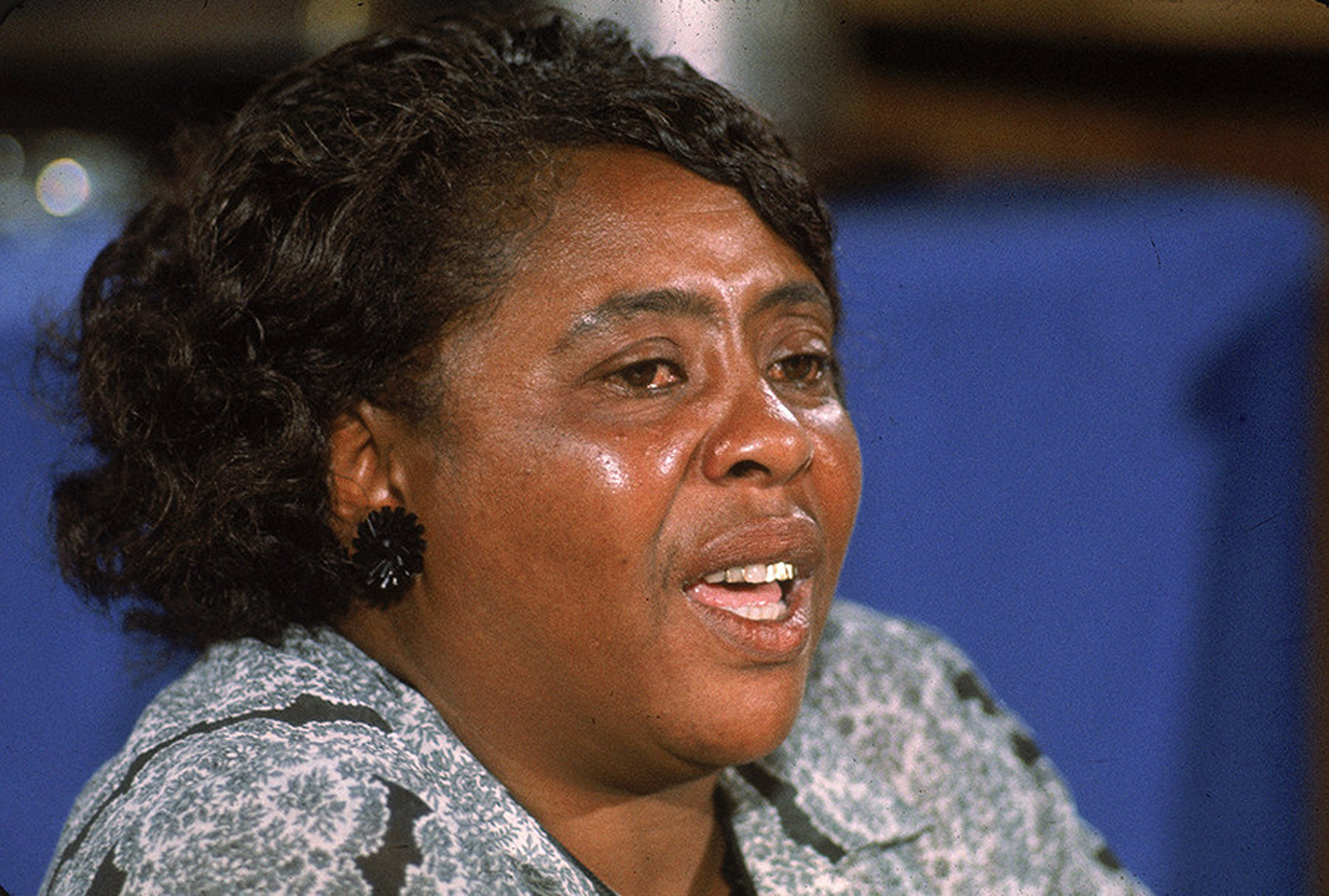Fannie Lou Hamer was one of the most dedicated civil rights activists in African American history and is mostly remembered for her unceasing effort to desegregate the Mississippi Democratic Party. Hamer was born on 6th October 1917 in Montgomery County, Mississippi to sharecroppers Lou Ella and James Townsend. The last born of twenty children, she was raised on a Sunflower County plantation. Since they didn’t have much, she joined her family in picking cotton by the tender age of six. At the same time, she was able to attend school although she only reached the sixth grade.
Afterward, she left school to work full-time. Around the 1940s, Hamer met the love of her life, Perry Hamer, and got married shortly after. For the next two decades or so, the couple lived in Mississippi where they worked for B.D. Marlowe, a plantation owner. During this period, she worked as a sharecropper and timekeeper as she was the only literate employee. In 1961, Hamer underwent a nonconsensual hysterectomy procedure during a surgery that was meant to remove a uterine tumor. According to black history online records, such cruel incidences against Black women were common back in the day. They were meant to decrease the Black population. Since she couldn’t have children of her own, the couple decided to adopt two daughters.
In the following year, the Student Nonviolent Coordinating Committee (SNCC)- led by Robert Moses – came to Sunflower Country to motivate blacks to register as voters. Encouraged by what she had learned from the movement, Hamer tried to register. Unfortunately, her employer was made aware of her plan to vote. In response, he fired her and threw the family out of their residence. The torture did not stop there as she continued to receive threats. In 1963, she was battered while on her way to Septima Clark’s citizenship school in Charleston. The mistreatment was so bad that she suffered kidney damage and short-term vision loss.
When I liberate myself, I liberate others. If you don’t speak
Fannie Lou Hamer
out ain’t anybody going to speak out for you.
That same year, she made her first contribution to black history by joining the SNCC organization. Despite being one of the oldest members (in her forties then), she was appointed as the field secretary. By the time she was voting for the first time in 1964, she had become actively involved in politics relating to African Americans. Hamer carried on with her efforts to advocate for the political rights of black people. She helped establish the Mississippi Freedom Democratic Party (MFDP). This political party served as an alternative to the state’s Democratic Party, which was predominantly white. During the 1964 Democratic National Convention in Atlantic City, MFDP was at the forefront, challenging the all-white state delegations. Hamer gave a detailed account of the assault she went through when trying to register. However, Hamer was abruptly taken off air when the President decided to start a live address at the same time. Still, the networks broadcast her full testimony in the days that followed.
Following her testimony, Hamer – alongside Martin Luther King – was invited for negotiations by the then vice president Hubert Humphrey. The meeting yielded some good news as the MFDP was offered two seats at the table. They were also promised that the black people would not be singled out during the 1968 convention. Still, Hamer was unwavering, insisting that the whole delegation be given a seat.
We didn’t come all the way up here to compromise for no more than we’d gotten
Fannie Lou Hamer
here. We didn’t come all this way for no two seats, ’cause all of us are tired.
Hamer carried on with her political career as a delegate in the Democratic National Convention of 1968. She also continued with her civil rights efforts until she died in 1977.
